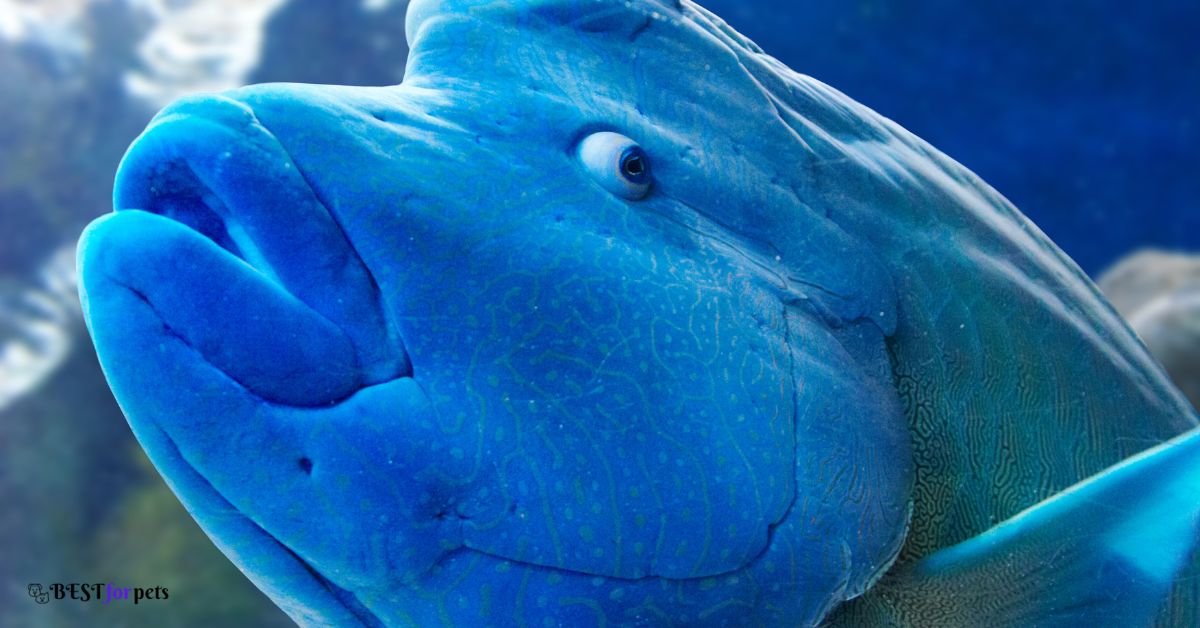The underwater world is a realm of astonishing diversity, where creatures have evolved a myriad of adaptations to thrive in their specific environments. One such intriguing adaptation is the presence of large, distinctive lips in certain fish species.
These big lipped fish exhibit a range of behaviors and feeding habits, and their unique features capture the imagination of marine enthusiasts and scientists alike. In this blog post, we will dive deep into the world of aquatic marvels and explore the top 10 fish with big lips.
Top 10 Fish with Big Lips
1. Napoleon Wrasse
The Napoleon Wrasse (Cheilinus undulatus) is a magnificent marine creature found in the Indo-Pacific region. Renowned for its captivating appearance, this fish boasts a hump on its forehead and prominent, thick lips.
These large lips are not just a striking feature but also an essential tool for its feeding habits. Napoleon Wrasse use their lips to pry open shells and crevices, allowing them to access their preferred diet of crustaceans and mollusks.
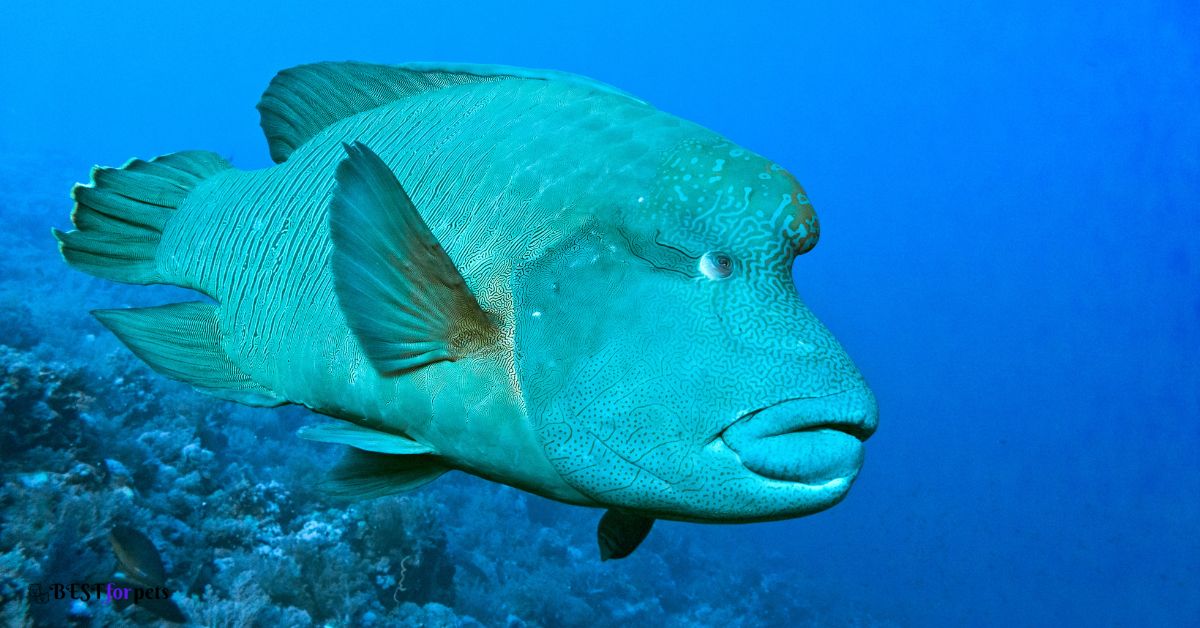
This specialized feeding behavior showcases the adaptability of marine life and the fascinating ways fish have evolved to survive in their underwater environments. With its commanding presence and unique facial features, the Napoleon Wrasse is a testament to the diversity of life beneath the waves.
2. Parrotfish
Parrotfish are among the most vibrant and iconic residents of coral reefs worldwide. One of their distinguishing features is their beak-like mouths, which often come with substantial, fleshy lips.
These lips, combined with their strong jaws, play a crucial role in their feeding habits. Parrotfish are herbivores, and they use their specialized mouths to scrape algae and other organisms off coral surfaces and rocky substrates.
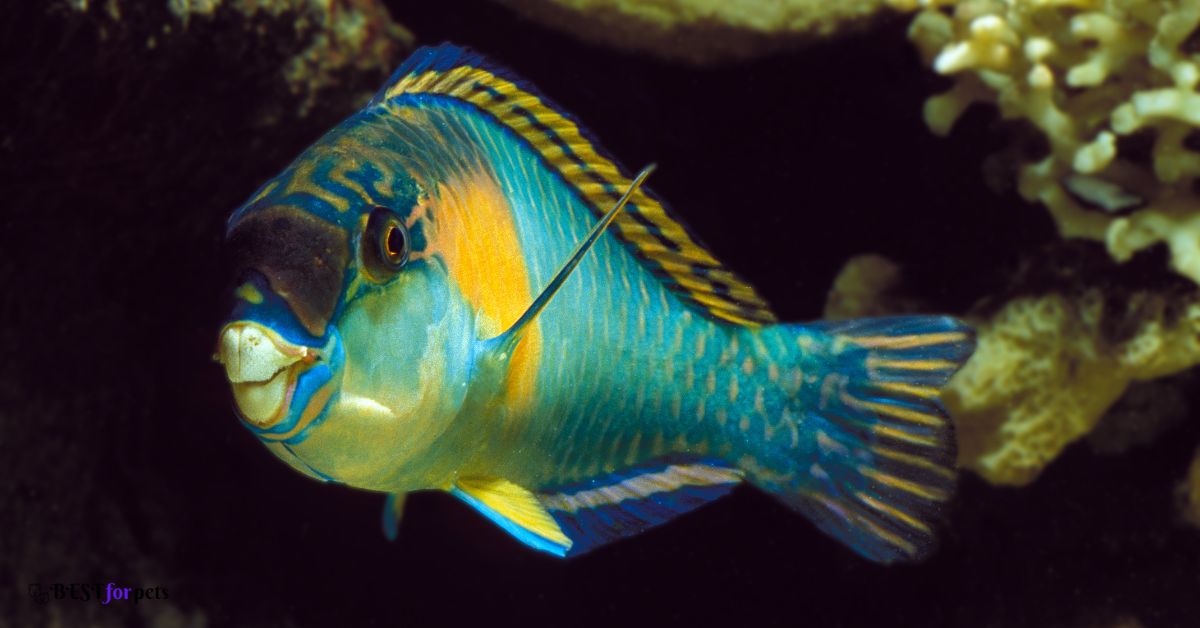
This grazing behavior not only shapes their unique appearance but also contributes to the health of coral reef ecosystems. By preventing excessive algae growth, parrotfish maintain a delicate balance that allows coral reefs to flourish. Their big lips serve as a testament to the interdependence between marine life and the intricate ecosystems they inhabit.
3. Humphead Wrasse
The Humphead Wrasse (Cheilinus undulatus), also known as the Maori Wrasse, is a remarkable fish found in the warm waters of the Indo-Pacific. This species is known for its distinct hump on the forehead and, of course, its thick lips.
These lips are a key feature in the fish’s feeding behavior. Humphead Wrasse employ their powerful jaws and lips to crush the shells of mollusks and crustaceans, forming a significant part of their diet.
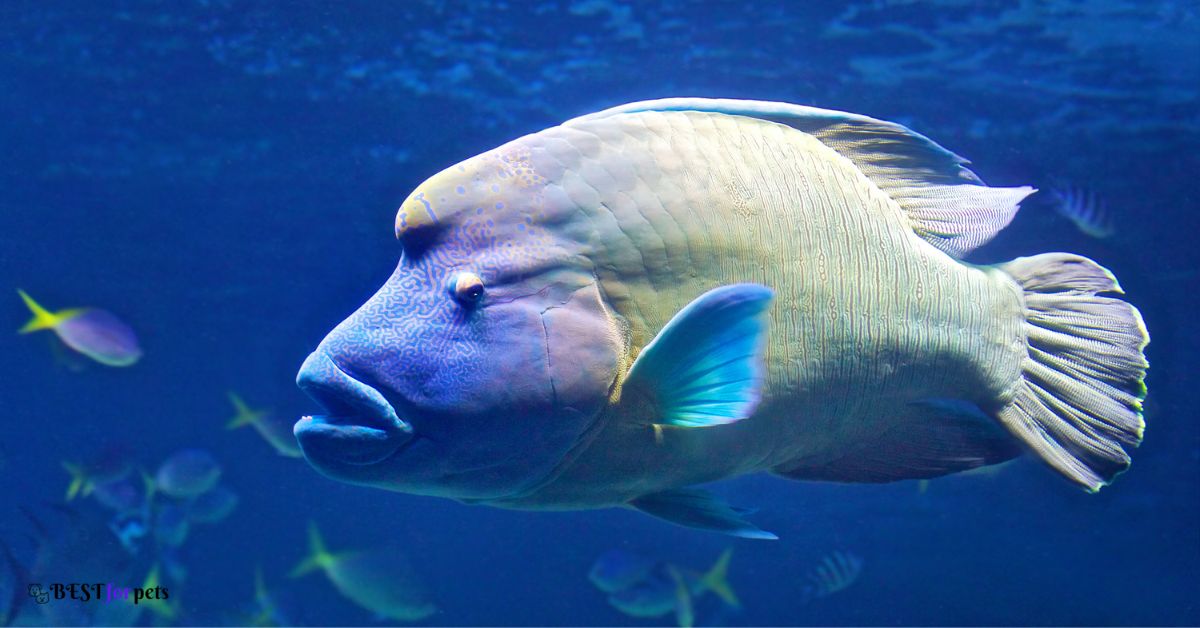
Beyond their unique appearance, these fish contribute to the balance of marine ecosystems by regulating the population of certain prey species. The Humphead Wrasse’s large lips exemplify the diversity of adaptations that allow fish to thrive in diverse underwater habitats, showcasing the intricate relationships between form and function.
4. Largemouth Bass
The Largemouth Bass (Micropterus salmoides) is a familiar inhabitant of freshwater environments, making its home in lakes, rivers, and ponds across North America. This iconic fish is easily recognized by its large mouth, characterized by an impressive upper jaw and substantial lips.
These features are perfectly suited for its predatory hunting strategy. Largemouth Bass are ambush predators, using their broad mouths to engulf smaller fish and aquatic insects in a sudden and powerful strike.
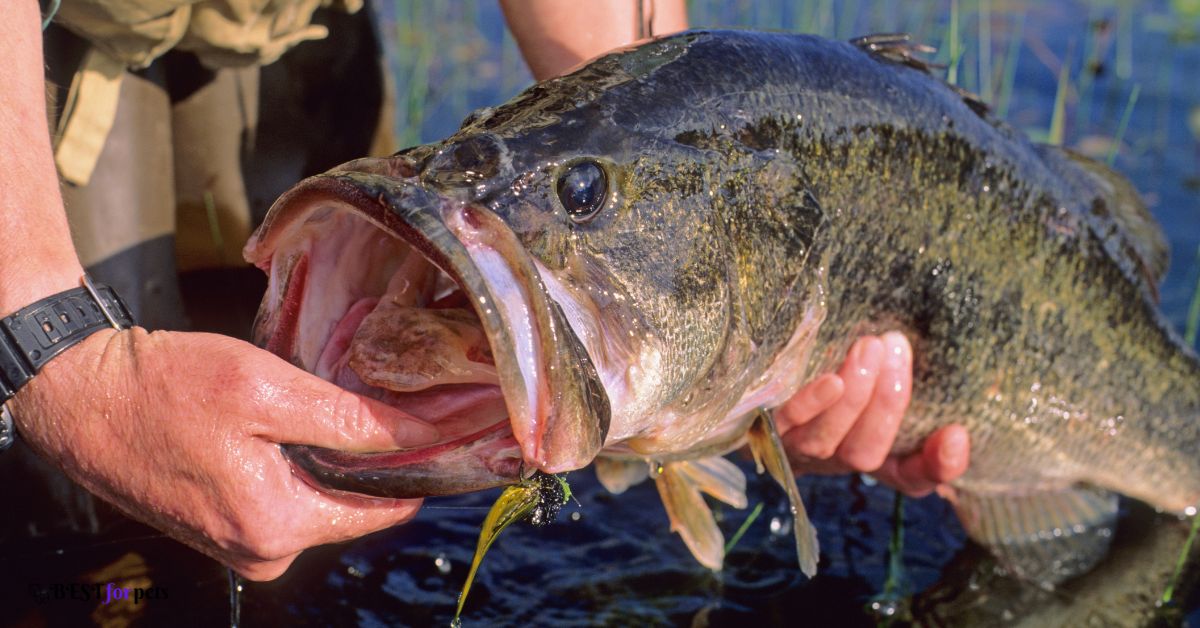
This feeding behavior, combined with their adaptability to various aquatic habitats, has made them a sought-after catch for anglers. The Largemouth Bass’s big lips not only contribute to its survival but also add to its allure, making it a symbol of recreational fishing and aquatic ecosystems across the continent.
5. Butterflyfish
Butterflyfish are a mesmerizing group of fish known for their vibrant colors and intricate patterns. Among their notable features are their big, protruding lips. These lips are an integral part of their feeding habits, enabling them to graze on algae and small invertebrates found on coral reefs. The lips aid in their unique method of feeding, where they use their tubular mouths to probe crevices and surfaces for food.

These graceful swimmers play a vital role in coral reef ecosystems by contributing to nutrient cycling and maintaining the health of coral structures. The combination of their striking appearance and specialized feeding behaviors makes butterflyfish a captivating sight for divers and marine enthusiasts alike.
6. Goliath Grouper
The Goliath Grouper (Epinephelus itajara) is a true titan of the marine world, known not only for its immense size but also for its distinct features, including large, puckered lips.fish big lipped serve as a key element in the grouper’s unique hunting strategy. Goliath Groupers use their mouths to create a vacuum effect, allowing them to suck in prey from a short distance away.
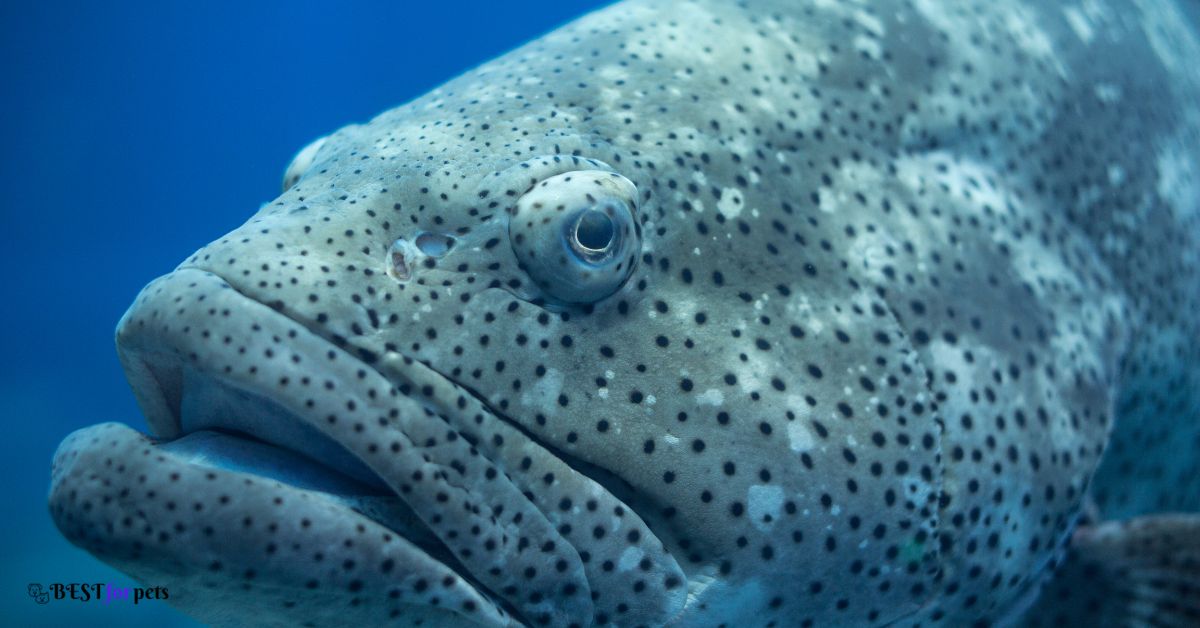
Found in warm waters, these colossal fish have an essential role in maintaining marine biodiversity by regulating the populations of smaller prey species. Their commanding presence, coupled with their impressive lips, showcases the marvels of nature’s diversity and the critical role that different species play in the marine ecosystem.
7. Snubnose Pompano
The Snubnose Pompano is a marine species recognized for its short snout and, notably, its substantial, fleshy lips. These big lipped play a vital role in its feeding habits, particularly bottom-feeding behavior. Snubnose Pompano use their lips to root around the seabed, where they hunt for small crustaceans and mollusks hidden in the sand and sediment.
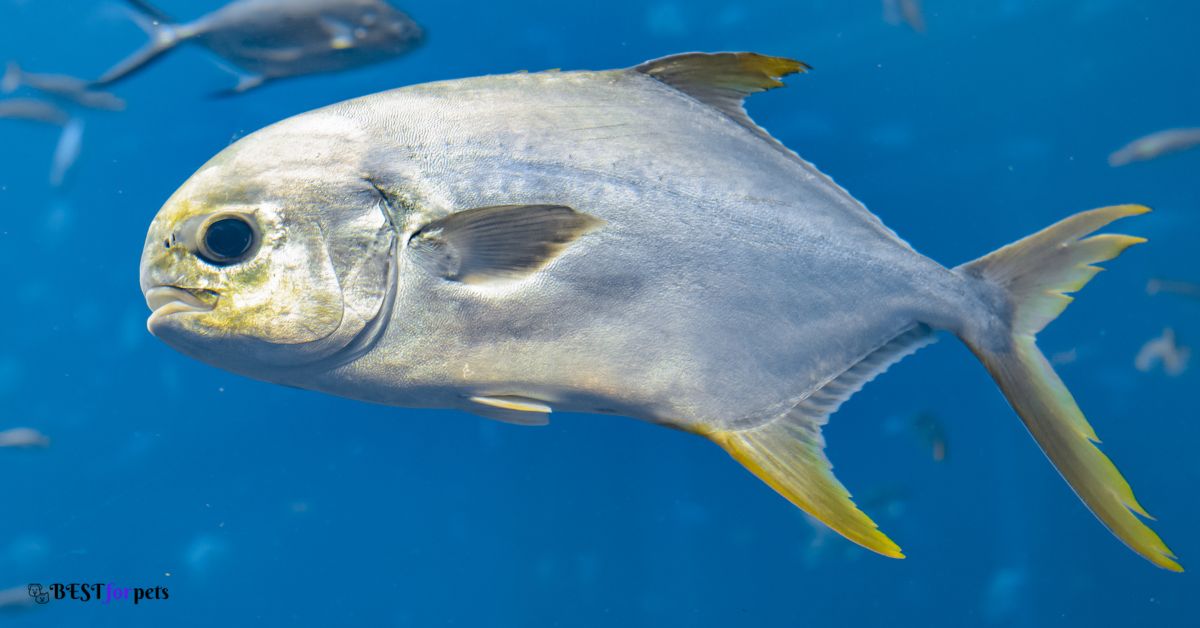
Their specialized feeding strategy illustrates the adaptability of marine life to various niches and environments. These fish are not only a testament to the intricate relationships between form and function but also a reminder of the hidden treasures that lie beneath the ocean’s surface.
8. Longhorn Cowfish
The Longhorn Cowfish (Lactoria cornuta) is an intriguing fish with a distinctive appearance that includes its boxy shape and long, tube-like snout. However, it’s their sizable, protruding lips that contribute to their unique facial features. These big lipped of fish aid in grazing on algae and small invertebrates, reflecting their herbivorous diet and their role in maintaining the balance of underwater ecosystems.
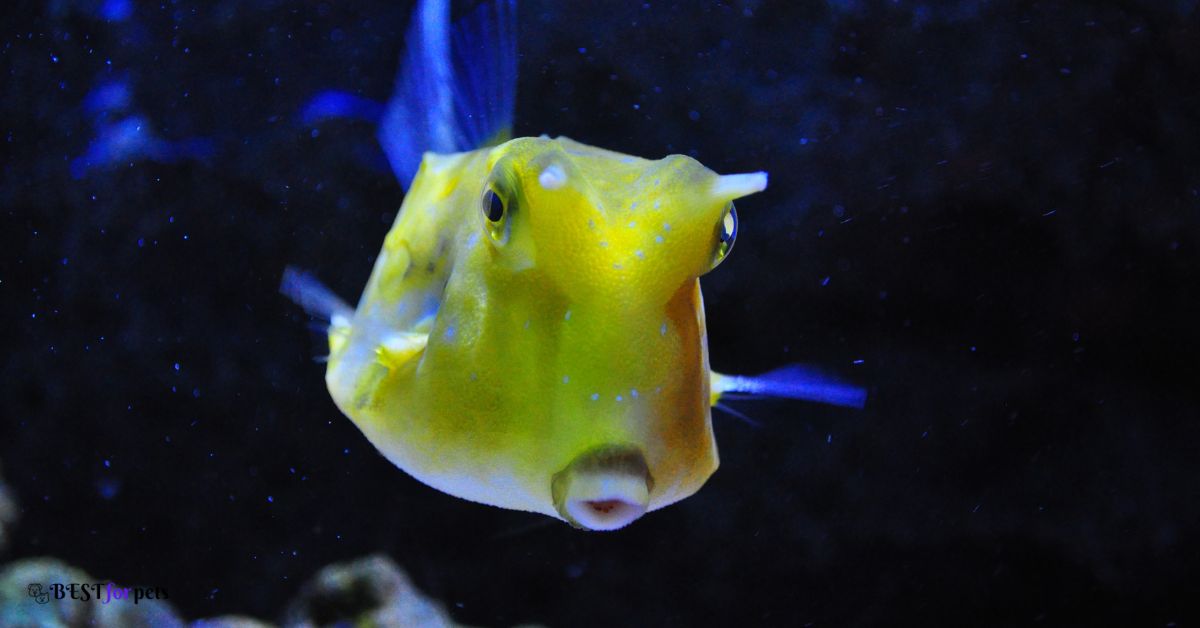
Longhorn Cowfish are not only fascinating to observe but also play a role in the intricate web of marine life interactions. Their quirky appearance, coupled with their vital ecological role, showcases the delicate balance of nature and the diversity of life beneath the waves.
9. Trumpetfish
The Trumpetfish is a master of disguise and deception in the underwater realm. With its elongated body and large, puckered lips, it possesses a remarkable ability to blend seamlessly into its surroundings. These lips are perfectly adapted to its stealthy hunting strategy. Trumpetfish use their elongated bodies and lips to approach their prey, often unsuspecting smaller fish, with remarkable precision.
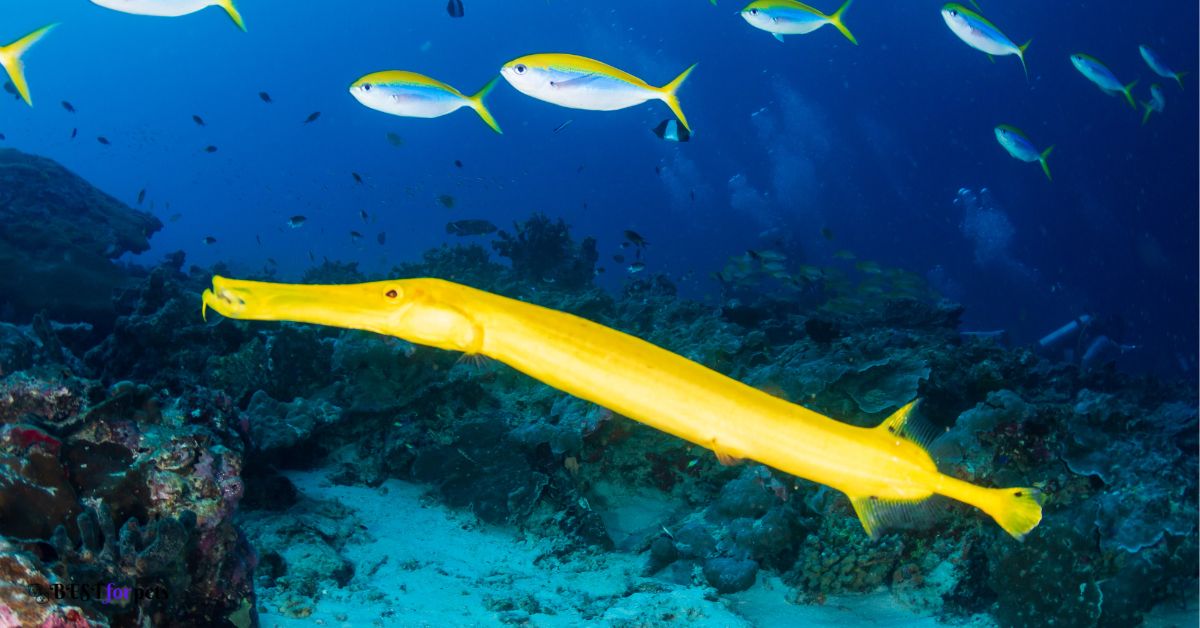
By pointing their bodies vertically and swaying with the gentle currents, they resemble pieces of seagrass or other aquatic vegetation, allowing them to approach their prey undetected. When the time is right, their swift strike, facilitated by their large mouths, ensures a successful capture.
The Trumpetfish’s unique combination of features—elongated body, impressive lips, and unmatched camouflage—makes it a captivating and enigmatic inhabitant of coral reefs and other marine environments.
10. Blue Ribbon Eel
The Blue Ribbon Eel (Rhinomuraena quaesita) is a stunning marine creature that stands out not only for its vibrant blue coloration but also for its elongated body and exceptional lips. These lips serve an essential purpose in its feeding behavior, allowing it to grasp and consume small fish and crustaceans.
The Blue Ribbon Eel’s appearance changes throughout its life cycle juveniles have bright yellow coloration, females turn yellow with a black tail, and males develop their distinct blue hue.
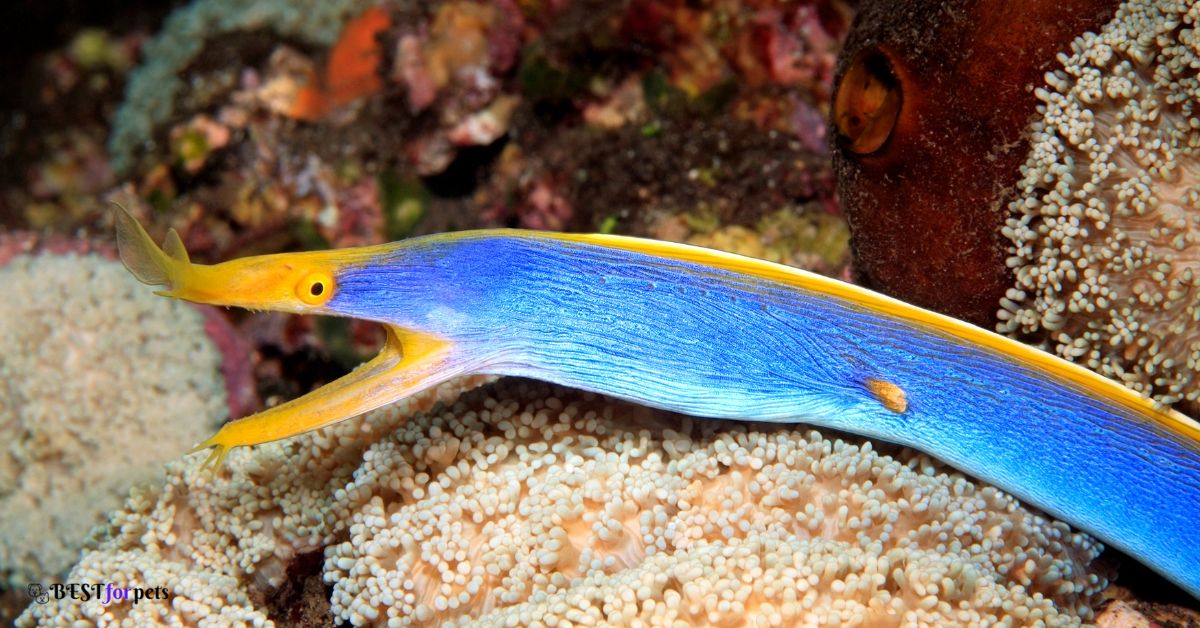
Their long, slender bodies and distinctive lips, combined with their ability to bury themselves in the sand and emerge with remarkable precision, make the Blue Ribbon Eel a sought-after sight for divers and underwater photographers. This unique fish exemplifies the diverse and mysterious beauty of life in the ocean’s depths.
Frequently Asked Questions
[sc_fs_multi_faq headline-0=”h4″ question-0=”Why do some fish have big lips?” answer-0=”Fish with big lips often possess these adaptations to suit their unique feeding habits. The size and shape of their lips are tailored to their preferred diet, whether it’s crushing shells, grazing on algae, or engulfing prey. These adaptations help them thrive in their specific aquatic environments.” image-0=”” headline-1=”h4″ question-1=”How do fish use their big lips for feeding?” answer-1=”Fish with big lips use their specialized mouths to execute their feeding strategies. For example, species like parrotfish and wrasses graze on coral and algae by using their lips to scrape surfaces. Others, like Goliath Groupers, create a vacuum effect to suck in prey, while some, like Napoleon Wrasse, pry open shells to access hidden prey.” image-1=”” headline-2=”h4″ question-2=”Do fish with big lips have other unique features?” answer-2=”Yes, many fish with big lips often have other distinctive characteristics. For instance, Goliath Groupers are known for their immense size, while the Blue Ribbon Eel stands out due to its vibrant blue coloration. These features contribute to their overall survival strategies in their respective habitats.” image-2=”” headline-3=”h4″ question-3=”How do big-lipped fish contribute to their ecosystems?” answer-3=”Fish with big lips play essential roles in maintaining the health and balance of their ecosystems. For instance, parrotfish help control algae growth on coral reefs, preventing overgrowth that could suffocate corals. Goliath Groupers regulate prey populations, ensuring ecosystem stability. ” image-3=”” headline-4=”h4″ question-4=”Are there any risks associated with having big lips for fish?” answer-4=”While big lips are generally advantageous for feeding and survival, they might make some fish more conspicuous to predators. However, many fish have evolved camouflage, unique coloration, or hiding behaviors to counteract this risk.” image-4=”” headline-5=”h4″ question-5=”Are big lips a sign of a specific fish species?” answer-5=”Big lips are a feature found in various fish species across different families and habitats. While some fish are renowned for their big lips, this adaptation isn’t exclusive to any single group. It’s a remarkable example of nature’s diversity and the ways fish have evolved to suit their environments. ” image-5=”” headline-6=”h4″ question-6=”Can the size of a fish’s lips change over time?” answer-6=”The size of a fish’s lips is primarily determined by its species and genetic makeup. While lips might change slightly with age or due to environmental factors, significant changes in lip size are less common compared to other bodily adaptations.” image-6=”” headline-7=”h4″ question-7=”Are there any conservation concerns related to fish with big lips?” answer-7=”Some species of fish with big lips, such as Napoleon Wrasse, have faced conservation concerns due to overfishing and habitat degradation. Conservation efforts aim to protect these unique species and the important roles they play in maintaining marine ecosystems.” image-7=”” count=”8″ html=”true” css_class=””]
Recommended
